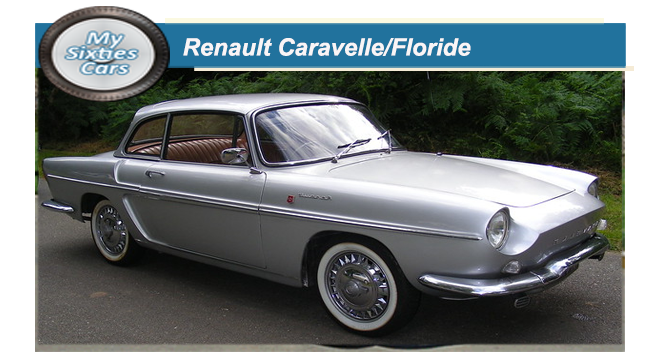
It was there and then that the realisation struck Dreyfus that in order to make any kind of breakthrough in the US, Renault would need to launch a model e tailor designed for the market.
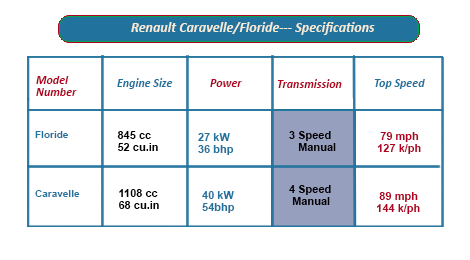 Reportedly Dreyfus returned to France with a vision fixed firmly in his mind.
Reportedly Dreyfus returned to France with a vision fixed firmly in his mind.
that vision was of developing a coupe/convertible version of the Renault Dauphine, which he was convinced would make for a desirable and top selling vehicle. Dreyfus spared no expense on his project, placing the final styling was placed in the capable hands of Pietro Frua of Carrozzeria Ghia.
Even more attractive to Renault was that the new model, to be known as the Floride, was almost certain to be very cost-effective, as most of the parts used in the Dauphine could be used in the new model, in particular, the engine and often temperamental three-speed column-change gearbox.
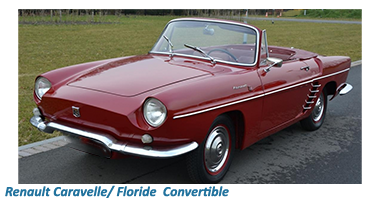 The Renault Floride was launched at the Paris Motor Show in 1958.
The Renault Floride was launched at the Paris Motor Show in 1958.
Response to the Floride, available as either a coupe or convertible was positive, despite its relatively high price tag.
As was they were seemingly compelled to do with every one of their new models, Renault launched the Floride with an engine that was too small, soon responding to customer feedback, with the introduction of the S model, which came with a bored-out 956cc (58 cu in) engine capable of generating 36 bhp.
![]()
With these issues out of the way, Renault set about the challenge of realising Dreyfus’ dream of launching their coupe/convertible when they came across a major stumbling block.
The US Department of Transportation decided that the "Floride" title could not be used in 49 of the 50 US states, and indeed only in Florida.
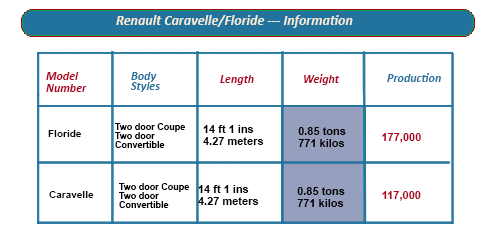 The reasons given by the DOT were that allowing the name Floride could be construed as “disrespectful” to the remaining states.
The reasons given by the DOT were that allowing the name Floride could be construed as “disrespectful” to the remaining states.
Not wanting to rock the boat, Renault hastily retreated, launching the model as the Caravelle in the US, while retaining the Floride title for Europe, the UK and the rest of the World.
The Caravelle/Floride continued to be powered by the slightly underpowered 956cc engine for the next three years.
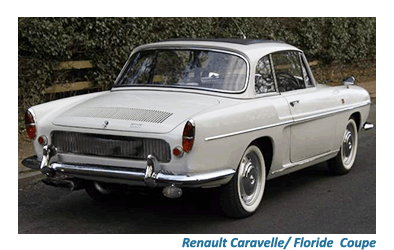 That was until Renault reached the conclusion that the Floride had run its course in Europe, leaving the Caravelle to compete in the US.
That was until Renault reached the conclusion that the Floride had run its course in Europe, leaving the Caravelle to compete in the US.
At that point, Renault began to market the Caravelle with an 1108 cc engine with an all synchromesh gearbox as standard.
Renault also created a comparitively long series of minor cosmetic changes, including fitting larger bumpers all around, an enlarged cooling grill on the rear, heater vents on the back, revised wheel trims and larger diameter wheels.
![]()
Hammering their message home even further, Renault placed a large and very prominent Caravelle badge on both sides of the car.
In response to customer feedback to round off the revamp, Renault also slightly raised the roof height on the coupe version of the Caravelle.
Although sales for the Caravelle remained consistent during the Sixties, in 1968 the model was finally discontinued.
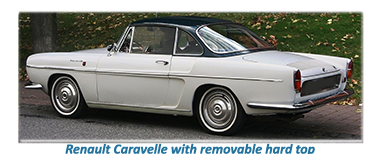 In commercial terms, Dreyfus’s experiment with the Floride/ Caravelle was far from a success, with around three hundred thousand models sold- 180,000 Florides and 120,000 Caravelles sold over eight years.
In commercial terms, Dreyfus’s experiment with the Floride/ Caravelle was far from a success, with around three hundred thousand models sold- 180,000 Florides and 120,000 Caravelles sold over eight years.
The Floride/Caravelle will be remembered as a car that looked a lot better than it drove.






